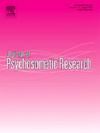Psychological distress after COVID-19 recovery and subsequent prolonged post-acute COVID-19 syndrome: A longitudinal study with one-year follow-up in Japan
IF 3.5
2区 医学
Q2 PSYCHIATRY
引用次数: 0
Abstract
Objective
This study investigated the longitudinal association between psychological distress in the post-acute phase and the subsequent prolonged post-acute COVID-19 syndrome (PACS) symptoms among individuals with PACS symptoms.
Methods
An online longitudinal survey was conducted from July to September 2021 (Time 1, T1) and from July to September 2022 (Time 2, T2). Individuals who were 20 years or older had a positive polymerase chain reaction test, were one-month post-infection, and did not select “Nothing” to a question about PACS symptoms were included. The primary outcome was any PACS symptoms at T2. General and respiratory symptoms at T2 were also examined among participants with those symptoms at T1. Exposure was psychological distress, defined as Kessler Distress Scale ≥13 at T1. Logistic regression analyses were conducted to examine associations between psychological distress and PACS symptoms, general and respiratory symptoms among participants with relevant symptoms at T1.
Results
Of 1674 participants, 671 completed T2, and 109 of them reported psychological distress. Psychological distress was associated with higher odds of any PACS (odds ratio [OR] = 1.79, 95 % confidence interval [CI] = 1.07–2.98, p = 0.03), general symptoms (OR = 1.92, 95 % CI = 1.01–3.67, p = 0.046), and respiratory symptoms (OR = 2.73, 95 % CI = 1.02–6.44, p = 0.02) at T2.
Conclusion
Psychological distress in the post-acute phase may contribute to the persistence of PACS symptoms, mainly general and respiratory symptoms, at the one-year follow-up in individuals with PACS symptoms.
COVID-19恢复后的心理困扰和随后延长的急性后COVID-19综合征:一项为期一年的日本纵向研究
目的探讨急性期后心理困扰与急性后冠状病毒肺炎综合征(PACS)症状延长的纵向关系。方法于2021年7月至9月(时间1,T1)和2022年7月至9月(时间2,T2)进行在线纵向调查。年龄在20岁或以上,聚合酶链反应试验呈阳性,感染后1个月,在有关PACS症状的问题中未选择“无”的个体被包括在内。主要终点是T2时的PACS症状。T2时的一般症状和呼吸道症状也对T1时出现这些症状的参与者进行了检查。暴露为心理困扰,定义为T1时凯斯勒困扰量表≥13。采用Logistic回归分析来检验心理困扰与T1时出现相关症状的PACS症状、一般症状和呼吸系统症状之间的关系。结果在1674名参与者中,671人完成了T2,其中109人报告有心理困扰。在T2时,心理困扰与任何PACS(优势比[OR] = 1.79, 95%可信区间[CI] = 1.07-2.98, p = 0.03)、一般症状(OR = 1.92, 95% CI = 1.01-3.67, p = 0.046)和呼吸道症状(OR = 2.73, 95% CI = 1.02-6.44, p = 0.02)的较高几率相关。结论急性期后的心理困扰可能导致PACS症状在1年随访中持续存在,主要是全身症状和呼吸系统症状。
本文章由计算机程序翻译,如有差异,请以英文原文为准。
求助全文
约1分钟内获得全文
求助全文
来源期刊
CiteScore
7.40
自引率
6.40%
发文量
314
审稿时长
6.2 weeks
期刊介绍:
The Journal of Psychosomatic Research is a multidisciplinary research journal covering all aspects of the relationships between psychology and medicine. The scope is broad and ranges from basic human biological and psychological research to evaluations of treatment and services. Papers will normally be concerned with illness or patients rather than studies of healthy populations. Studies concerning special populations, such as the elderly and children and adolescents, are welcome. In addition to peer-reviewed original papers, the journal publishes editorials, reviews, and other papers related to the journal''s aims.

 求助内容:
求助内容: 应助结果提醒方式:
应助结果提醒方式:


